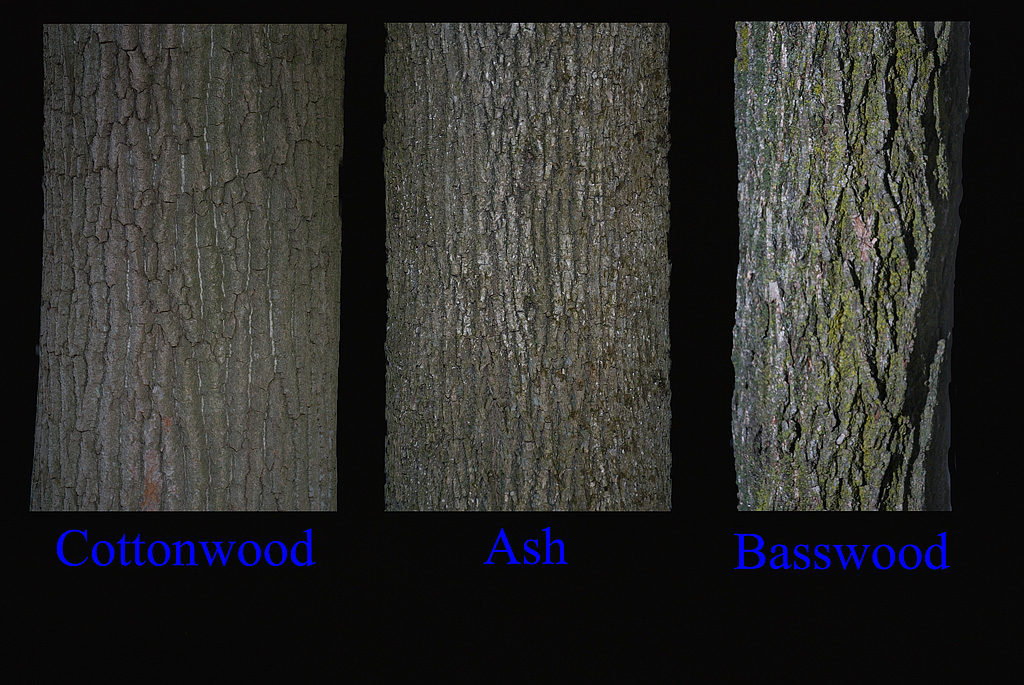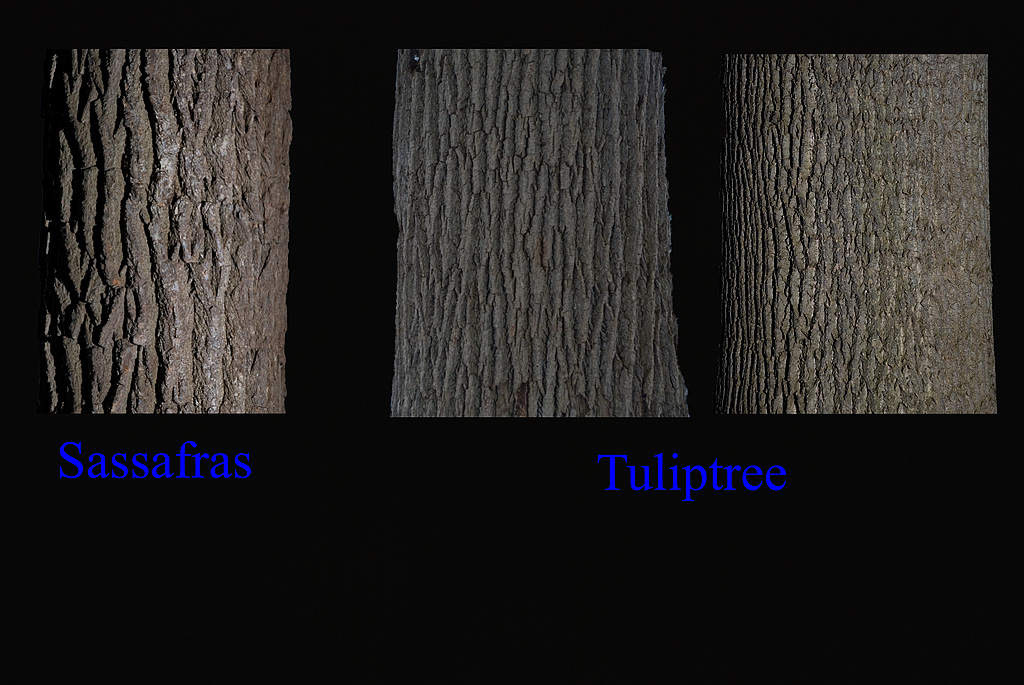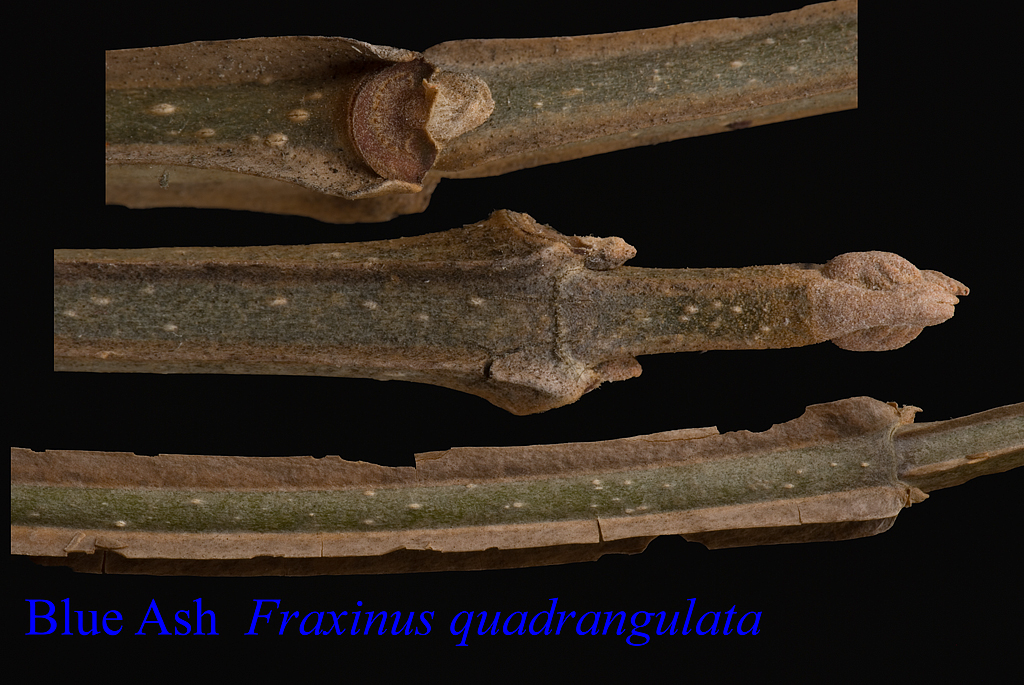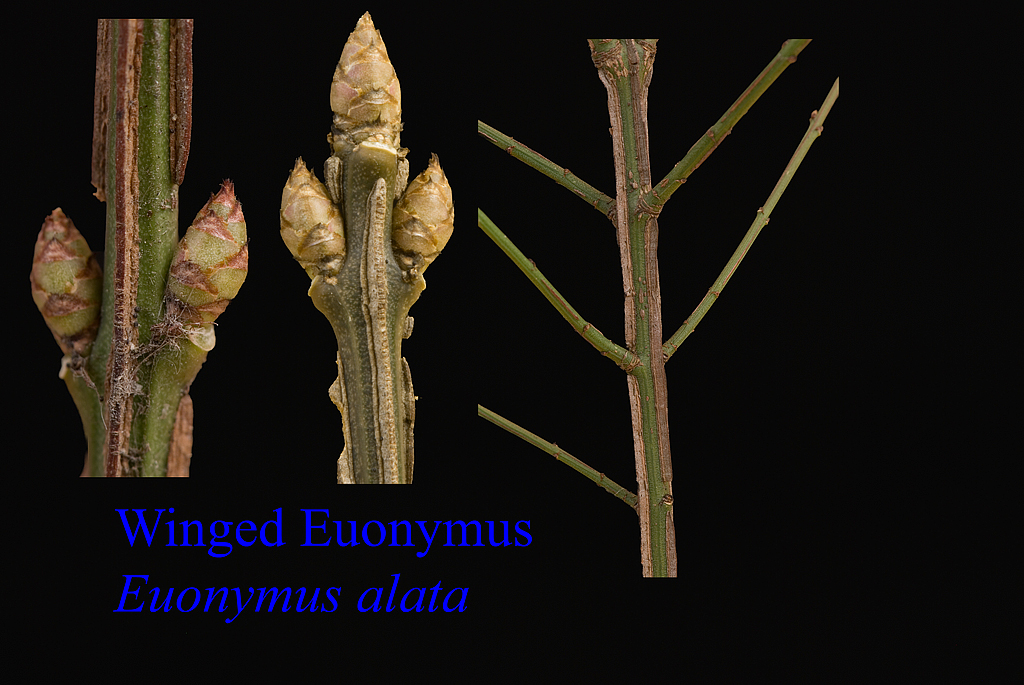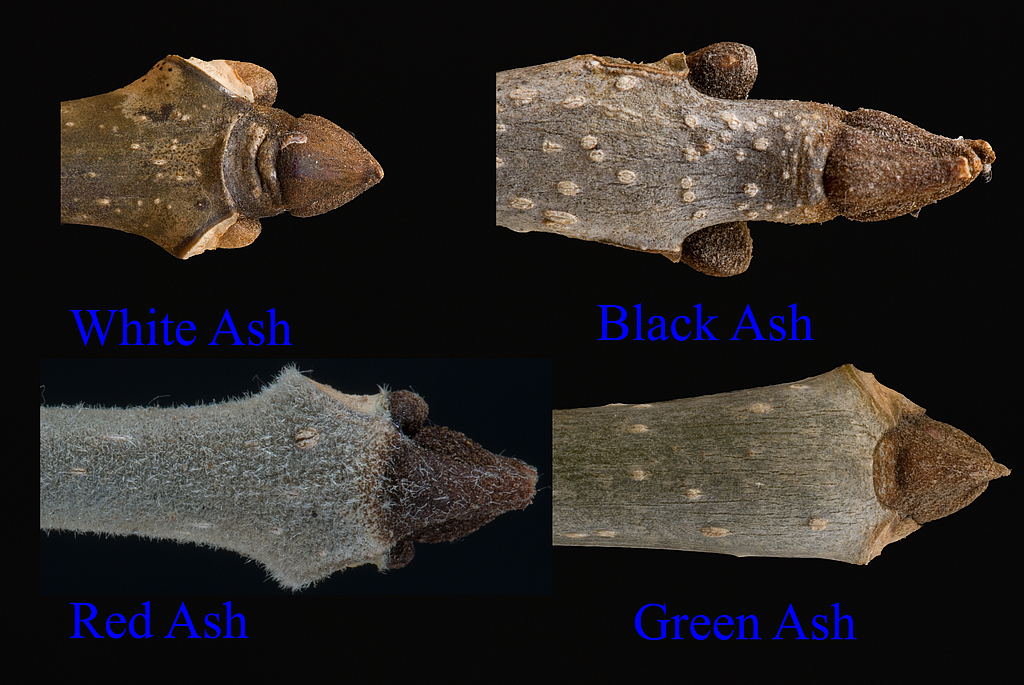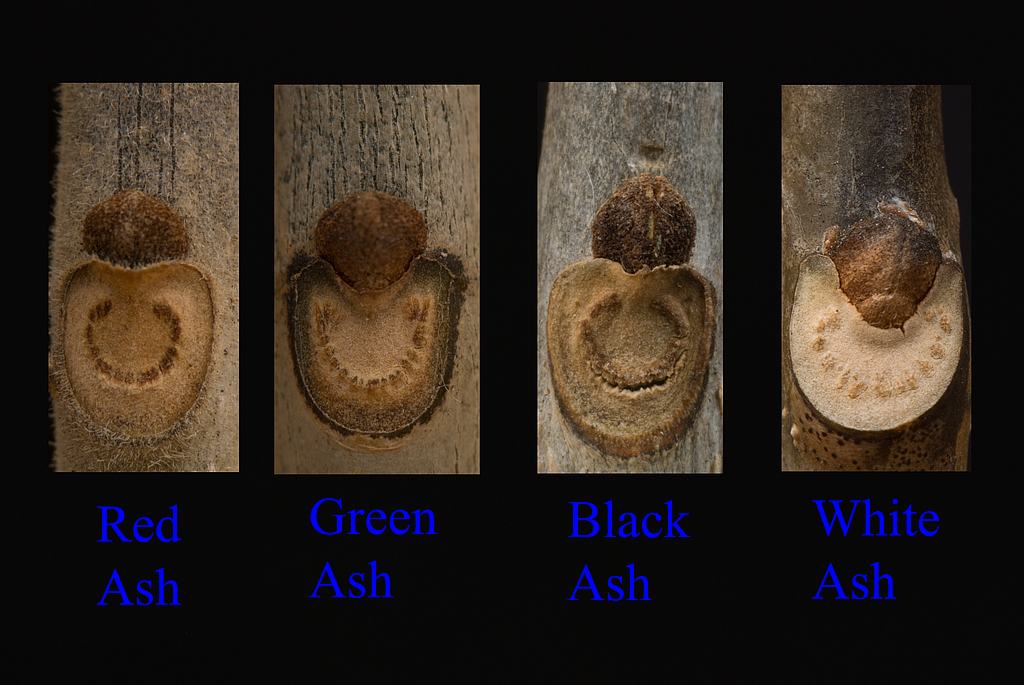Researchers at the Northern Research Station of the United States Department of Agriculture are looking for naturally occurring Ash trees (Fraxinus spp.) in southeast Michigan. They are searching for a strain of Ash that will survive attacks from the Emerald ash borer (EAB), (Agrilus planipennis). The tree must be part of a native stand, have a healthy canopy, and be larger than 10 inches diameter at breast height (DBH). More information can be found at the USDA website. The ten target counties in Michigan are: Ingham, Livingston, Oakland, Macomb, Jackson, Washtenaw, Wayne, Hillsdale, Lenawee, and Monroe.
Ash trees can be identified even in the winter. Ashes have their buds in pairs (Opposite) and most Michigan tree species have single buds (Alternate). Maples, Ashes, Dogwoods and Horse-chestnuts (MAD-Horse) are our only tree species that have opposite buds. See my earlier post on identifying these trees.
Mature Ash bark is gray with fine, broken, ridges. Ashes have opposite buds and opposite branches. When you look at the branch pattern on a tree look at the overall pattern. An opposite branched tree will always have a few alternate branches where it has lost branches. Young Tuliptree bark is similar but the ridges are not as deep and the buds and branches are alternate. Eastern Cottonwood bark is similar to Ash bark but it has larger ridges and is alternate branched. Sassafras bark has deeper ridges than Ash and often a reddish cast. The ridges on Basswood bark are not parallel.
Pumpkin Ash (Fraxinus profunda) and Blue Ash (F. quadrangulata) are rare trees in Michigan. Blue Ash has a winged stem and the leaf scars meet. It resembles Winged Euonymus (Euonymus alata) but Euonymus has distinct bud scales, normally green twigs, and is never a large tree.
Red and Green Ash are the same species (F. pennsylvanica). Red Ash is just a hairy form of the Green Ash. They have lateral buds that touch the terminal bud and the lateral buds sit in a small notch in the leaf scar. White Ash (F. americana) has a long terminal bud and the leaf scar encircles approximately half of the lateral bud. Black Ash (F. nigra) has a short section of the twig protruding beyond the last pair of lateral buds. The lateral buds are almost black and sit on the leaf scar.
If you are hiking this winter in southeast Michigan, keep an eye out for large, healthy, Ash trees. Report your sighting to the USDA website mentioned above and aid in this valuable research.
Copyright 2014 by Donald Drife
Webpage Michigan Nature Guy
Follow MichiganNatureGuy on Facebook

